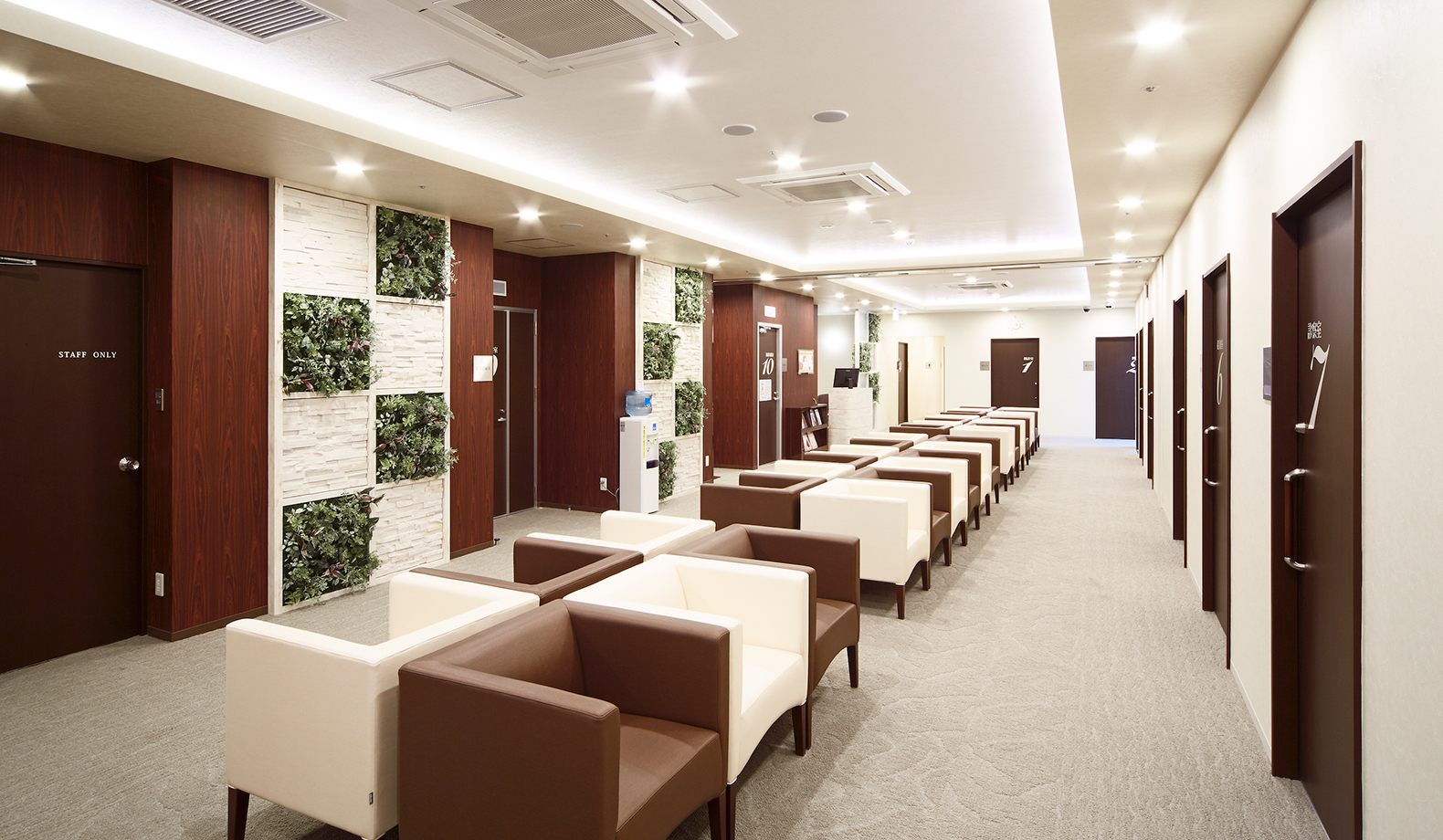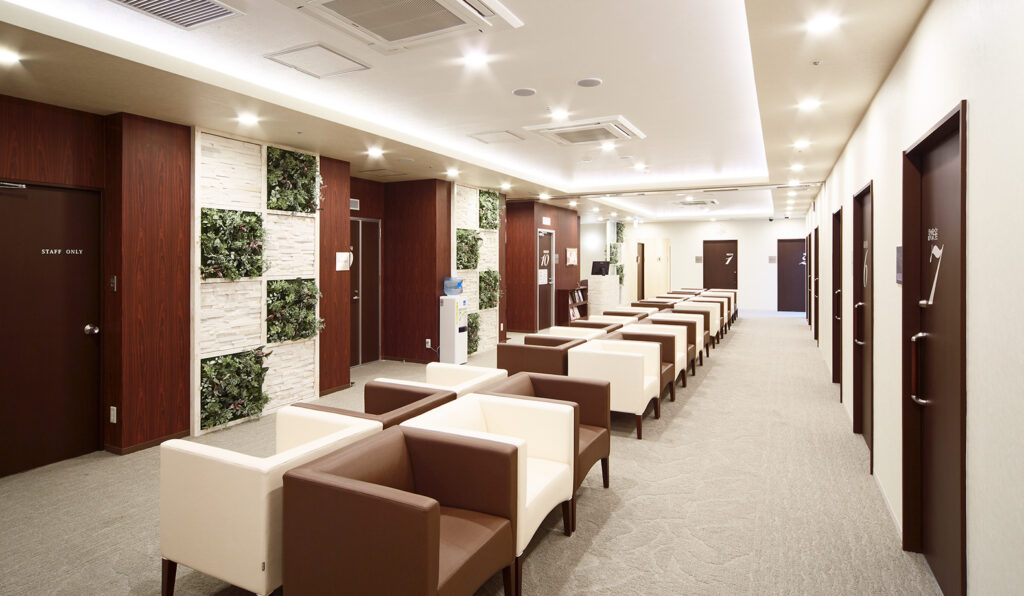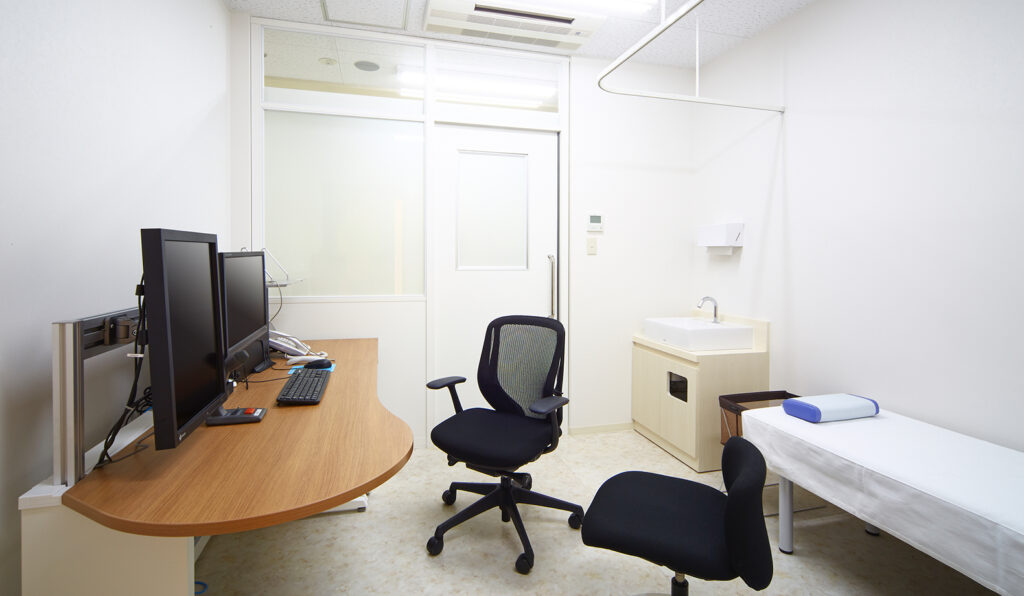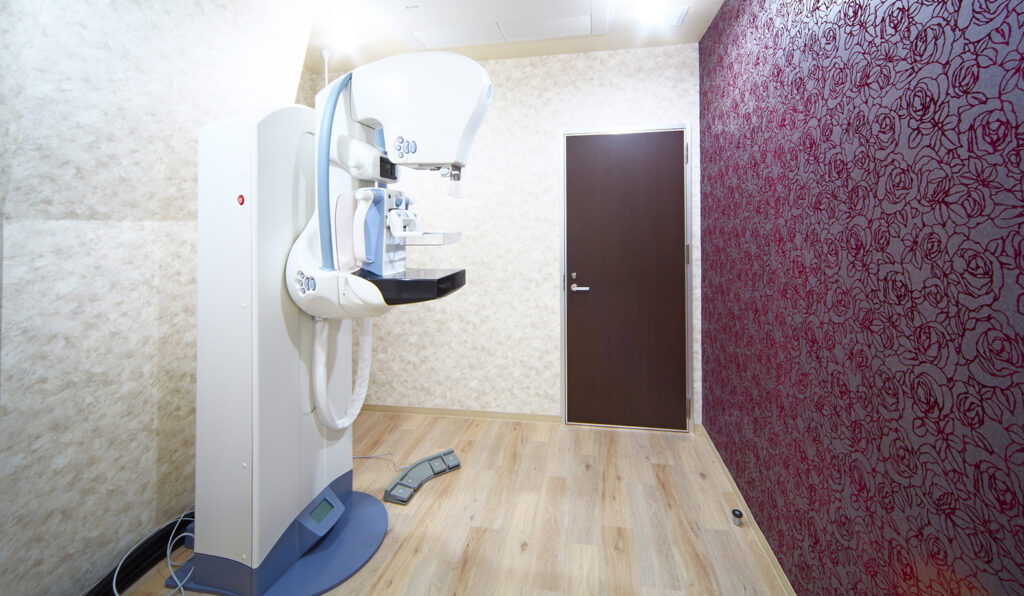With the increase in life expectancy, there is growing interest not only in the treatment of illness but also in the prevention. In order to meet such needs, medical institutions are increasingly establishing "medical examination centers" by utilizing testing equipment and human resources. On the other hand, there is a movement to separate the hospital from the hospital and create an independent medical examination center in a convenient location. Let us consider the future of medical examinations by taking as an example the efforts of the medical examination center that welcomes examinees with the latest equipment, comfortable space, and the attention of the staff.

Adult health examinations include workplace health examinations required by the Industrial Safety and Health Act, specific health examinations conducted by municipalities, cancer screenings for stomach cancer and breast cancer, and "human docks" that can be taken at the will of the individual. .. It is carried out at outsourced hospitals and centers specializing in medical examinations, and sometimes buses loaded with inspection equipment are dispatched to the workplace.
In many medical examinations, the users who receive the examinations are half-duty, and there are many who do not receive the examinations. The Ministry of Health, Labor and Welfare, companies and local governments have taken various steps to raise the consultation rate, but even so, for example, the consultation rate for specific medical examinations was only 53.1% in FY2017.
On the other hand, the medical examination business also serves as a contact point for medical institutions to find out who is the target of medical treatment. Even if there is no problem with the test results, we are making various efforts so that if we receive a medical examination every year, it will lead to a certain amount of income. There are an increasing number of places where the flow lines of hospital patients and medical examinees do not cross each other by establishing a "health examination center" in the hospital, but there is also a movement to establish a new medical examination center in a location completely different from the hospital.
One of them is the "Azamino Medical Examination Clinic" opened in 2016 by the Yokohama General Hospital (Aoba Ward, Yokohama City) in front of Azamino Station on the Tokyu Denentoshi Line and Yokohama Municipal Subway. The main hospital takes about 10 minutes by bus from Azamino Station, but the medical examination clinic is conveniently located on the 4th floor of the building where the supermarket in front of the station is located.
When you enter the clinic, there is a counter like a reception desk of a general company, and in the waiting room behind it, about 30 sofas for one person are lined up back to back. The room where each inspection is performed is designed to enter directly from the waiting room, and the flow line of the user is designed to be short. When the user arrives at the clinic, he / she will change into a special inspection gown, then sit in this waiting room and relax and wait for the inspection turn.
Kozue Akiyama, the chief nurse of the clinic, said, "In the past, we had a medical examination center at our hospital, but some examinations use hospital equipment, so patients in everyday wear and users of examination clothes are better. There was a sense of resistance to the users due to the crossing. Even if the turn finally came, the users sometimes had to wait again when a patient who needed an urgent examination came in. " Saori Hara, the director of the medical examination center, said, "The examination is stressful for the user. In order to reduce it as much as possible, we created a specialized medical examination facility in a place different from the hospital and devised an atmosphere."
Waiting room of Azamino Medical Examination Clinic. A calm atmosphere with one-seat sofas lined up. The entrances to all examination rooms face the waiting room.

The most important thing for a medical examination center is to carry out safe and accurate examinations. The Azamino Medical Examination Clinic puts particular effort into preventing infections, as healthy people without symptoms go to the clinic to check their health level.
First of all, standard precautions (standard preventive measures for infectious diseases) are thoroughly implemented for staff such as doctors, nurses, and laboratory technicians. Although there are no symptoms, skin, mucous membranes, blood, body fluids, excrement, etc. are all treated as infectious. If you touch it, wash your hands with soap and wear gloves, face shield, mask, apron, etc. if necessary. Most of the medical materials used are disposable, and Cusco, which is used for cervical cytopathology, is also disposable. Not only stool test samples but also urine test samples are collected at home, and the sealed ones are brought on the day of the test, so urine that may be a source of infection is taken out of the toilet. Nor. The endoscopes used for gastrointestinal examinations are cleaned and disinfected according to the guidelines of the Japan Gastroenterological Endoscopy Society.
In order to ensure safety and perform highly accurate examinations, we have the latest equipment such as endoscopes, chest X-ray examination equipment, gastric X-ray examination equipment, and mammography. In particular, mammography has introduced 3D mammography (see separate article), which is not available at nearby medical institutions and medical examination centers.
At the Azamino Medical Examination Clinic, in addition to the human dock, we also carry out health examinations, specific medical examinations, cancer screenings for Yokohama citizens, health insurance association members, employment, examinations, and health examinations for overseas travel. These menus are the same as other health checkup centers, but the Human Dock has many optional tests. This is the needs of the examinees, that is, the menu "prepared to reduce anxiety about health" (Mr. Hara). Visceral fat test, bone density test, 3D mammography, breast ultrasonography, cerebral infarction risk marker test, gastric cancer risk test, etc.
In addition to the human dock, there is also a specialized dock. In addition to the brain dock and cardiovascular dock, the feature of this medical examination clinic is the "memory clinic". This is based on examinations by specialists of the Japan Society for Dementia, detailed neuropsychological examinations, diagnostic imaging using head MRI (examinations are conducted at Yokohama General Hospital), and evaluation of risk factors such as lifestyle-related diseases. It determines the risk of developing dementia and manages the crisis of the brain for prevention. It can be said that this is an initiative that captures the needs of an aging society.
It is largely due to the power of the staff to increase the security and satisfaction of users while utilizing these latest equipment. Mr. Akiyama says, "Even if I'm worried about my health, I'm trying to be told that I'm feeling better when I have an examination at this clinic." "The inspection is stressful for the users. I want them to relax as much as possible. Of course, it is important to create a clean and spacious space, but the key is the hospitality of our staff." Once a year, all staff are trained in hospitality. Even one word was called "Mr. XX" at the hospital, but here it is called "Mr. XX". Just by adding "sama", the wording that follows will naturally become polite. Not only the wording, but also the guidance of hospitality such as greetings, how to guide, how to close the door, etc. are detailed.
In reducing the stress of users, the concierge (office staff) plays a major role in managing the schedule and providing guidance so that the inspection can be performed smoothly without waiting too much. In the morning, 30 to 40 people will visit the human dock, and in the afternoon, 30 to 40 people will visit the medical examination in Yokohama. At the time of reception, we will ask the person's intentions, for example, if you are not good at collecting blood, put it off the most, if you are going to have an optional endoscopy test, have a breath test before that, etc. It is said that the order of inspections is assembled and adjusted daily so that the waiting time is reduced as a whole.
Four public health nurses work at the Azamino Medical Examination Clinic. He is mainly in charge of specific health guidance based on the results of specific medical examinations, but based on his experience of specific health guidance for more than two years, he says, "We plan to provide counseling that goes one step further." As a result of the guidance, there were more than 60 users who acquired "health habits that are unique to them" in two years, so this was planned by Mr. Akiyama and others and is named "self-care counseling".
Public health nurses and dietitians look back on their daily lives and think together about how to improve their eating habits and exercise so that they can do it comfortably. We have prepared a 3-month course and a 6-month course.
"Our role in health checkups is to help healthy people become more energetic," says Akiyama. Location, facilities, and human resource development are indispensable for increasing the satisfaction of users of the medical examination center.
A privacy-friendly examination room. Consideration was given to communicating slowly with the doctor.

The 3D mammography introduced at the Azamino Medical Examination Clinic is a three-dimensional fault based on the data taken from multiple directions by changing the angle, whereas the conventional mammography was only taken from the top, bottom, left and right. Make up the image. This function is called tomosynthesis, and is a coined word derived from tomography, which means tomography, and synthesis, which means synthesis. Whereas traditional mammography is called 2D mammography, tomosynthesis is called 3D mammography.
With continuous imaging for about 10 seconds, the entire breast can be represented by fine images at 1 mm intervals. In 2D mammography, all the information on the breast is made into one image, so the lesion may overlap with the normal mammary gland and be difficult to detect. Tomosynthesis is said to make it easier to detect small breast cancers that were previously hidden in the mammary glands and were difficult to find, in addition to the depiction of fine calcifications that mammography is good at. In addition, it is said that the number of cases that required a detailed examination can be reduced by about 40% because it cannot be distinguished from lumps.
The latest 3D mammography. It is said that few medical institutions have introduced it in Yokohama City.
